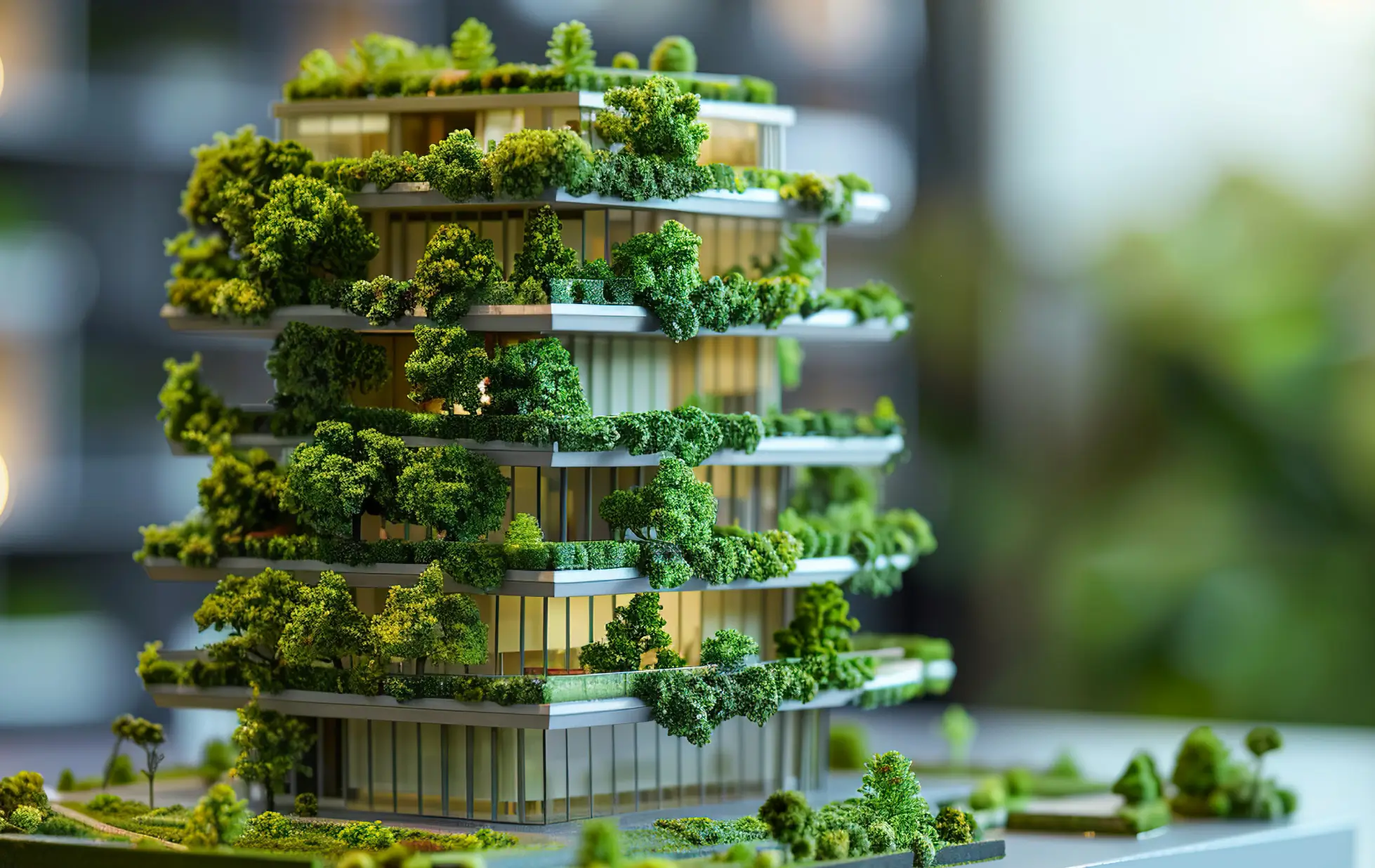By admin — 28 February 2025
The Rise of Green Buildings: Sustainable Architecture in 2025
As the world faces increasing environmental challenges, the shift towards sustainable architecture has never been more critical. Green buildings are not just a trend but a necessity in the fight against climate change. In 2025, sustainable architecture is redefining how buildings are designed, constructed, and operated. From energy-efficient materials to smart technology integration, the green building movement is shaping the future of urban landscapes.
What Are Green Buildings?
Green buildings are structures designed to minimize environmental impact while maximizing energy efficiency and resource conservation. They incorporate sustainable materials, renewable energy sources, and innovative technologies to create eco-friendly spaces. The primary goals of green buildings include reducing carbon footprints, conserving natural resources, and improving occupant well-being.
Key Trends in Sustainable Architecture in 2025
-
Smart and Energy-Efficient Design
Modern green buildings integrate smart technologies such as IoT-based energy management systems, automated lighting, and climate control to enhance efficiency. AI-driven analytics help optimize energy consumption, making buildings more sustainable.
-
Use of Renewable Energy
Solar panels, wind turbines, and geothermal energy are becoming standard in new constructions. Buildings in 2025 are designed to generate their own power, reducing dependence on fossil fuels.
-
Eco-Friendly Building Materials
The rise of materials like bamboo, recycled steel, and low-carbon concrete is transforming the construction industry. These materials not only lower emissions but also improve the longevity and efficiency of buildings.
-
Green Roofs and Vertical Gardens
Urban spaces are incorporating more greenery through green roofs and vertical gardens. These features enhance insulation, improve air quality, and reduce the urban heat island effect.
-
Water Conservation Techniques
Water recycling systems, rainwater harvesting, and low-flow plumbing fixtures are now standard in sustainable buildings. These systems help conserve water and reduce overall consumption.
-
Net-Zero and Carbon-Neutral Buildings
The concept of net-zero energy buildings, which produce as much energy as they consume, is gaining traction. Many new projects are also aiming for carbon neutrality by offsetting their emissions through sustainable practices.
-
Prefabrication and Modular Construction
Prefabricated and modular construction methods are reducing waste and increasing efficiency. These techniques use sustainable materials and allow for faster, cost-effective building processes.
Benefits of Green Buildings
1. Environmental Benefits:
- Reduces greenhouse gas emissions
- Conserves water and natural resources
- Promotes biodiversity and reduces pollution
2. Economic Benefits:
- Lowers energy and water costs
- Increases property value
- Enhances long-term sustainability and durability
3. Health and Well-Being:
- Improves indoor air quality
- Enhances natural lighting and ventilation
- Reduces stress and boosts productivity
Future of Green Architecture
The rise of green buildings in 2025 is just the beginning of a more sustainable future. With governments pushing for stricter regulations, corporations adopting eco-friendly policies, and individuals becoming more conscious of their environmental footprint, sustainable architecture will continue to evolve. Innovations like carbon-capturing materials, AI-driven energy systems, and bio-based construction methods will further revolutionize the industry.
Conclusion
Green buildings are no longer an option—they are a necessity for a sustainable future. InOut Infratech is at the forefront of this transformation, integrating cutting-edge sustainable design and eco-friendly solutions into modern architecture. As we step into a greener future, embracing sustainable practices in architecture will lead to a healthier planet and a better quality of life for all.
 21 February 2025
21 February 2025



